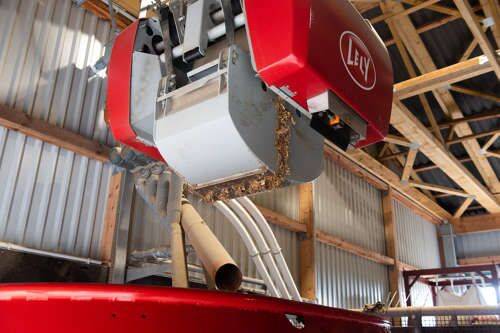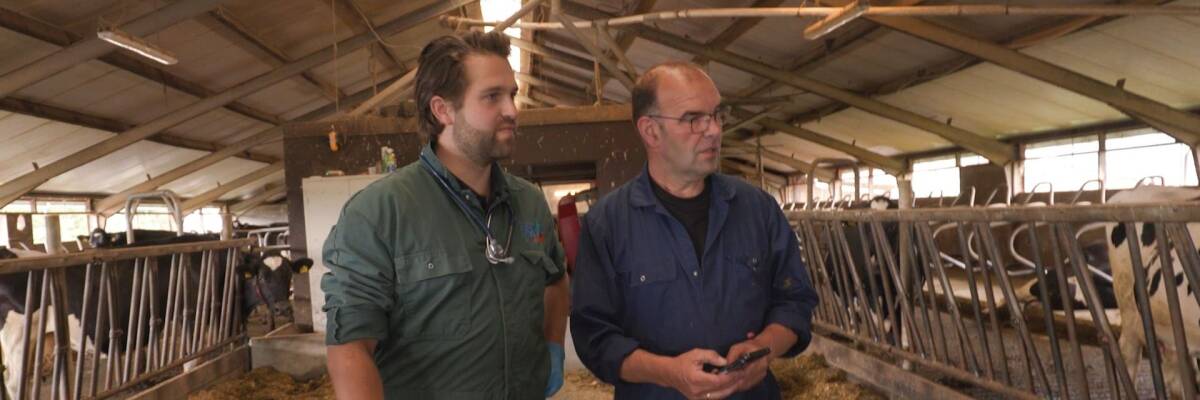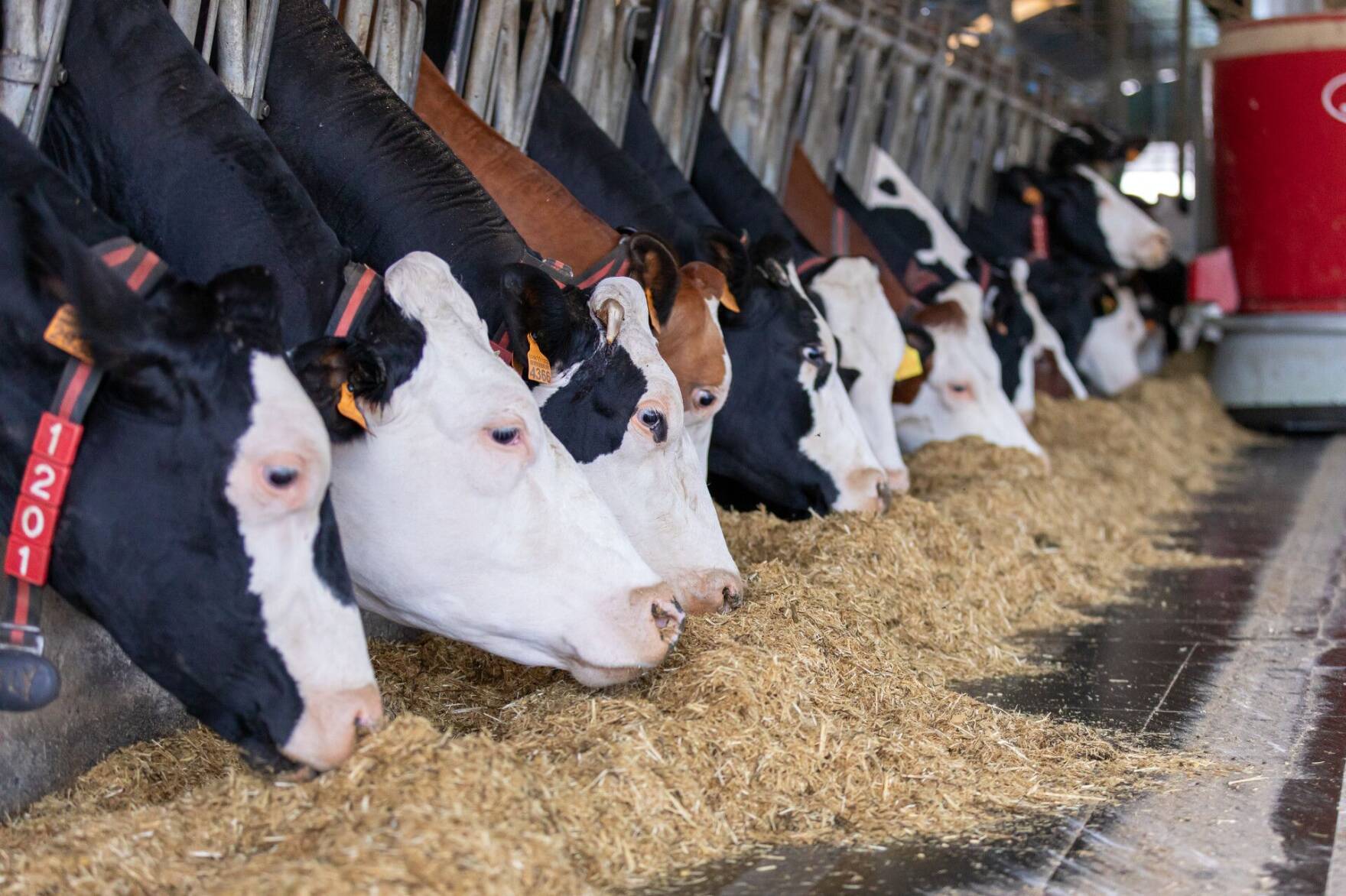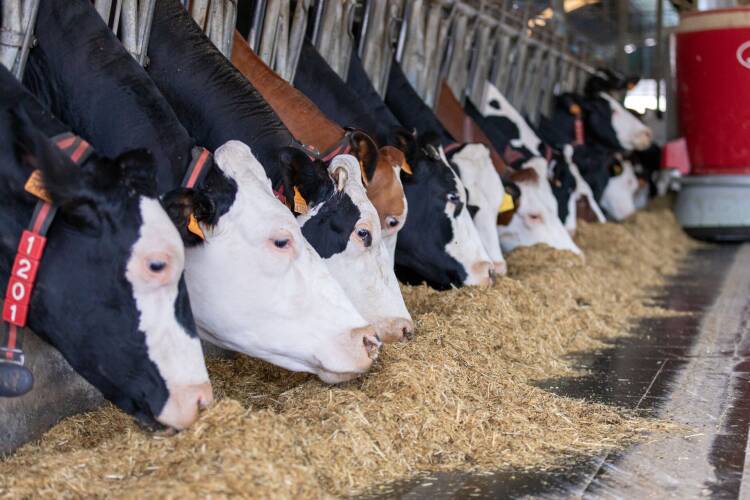
the numbers explained

Research outcomes
When the temperature of the feed was more than 10 degrees above the outside temperature, it was considered scalding (=feed is heating up). It was found that for both grass and corn, the top layer of the feed block was heating up more than the center of the blocks. The center of the feed blocks remained below the scalding limit in the first three days. It was also found that there were almost no nutritional losses if feed blocks were not scalding. Only the blocks that were scalding experienced nutritional losses. These losses were mainly VEM (Dutch feed energy system) and starch losses.
Research conclusion
Effective silage management is crucial for maintaining the nutritional quality of feed and ensuring the productivity of your livestock. By optimising silage management, scalding in your feed blocks will be prevented. If you are able to prevent scalding, you will considerably minimise nutritional losses.
Correct silage management
The reason why scalding took place on some farms and not on others was because of silage management. Here are a few important aspects to consider for good silage management.
Harvest management: The way a crop is harvested has a significant impact on its quality afterwards.
Ensiling: Make sure the feed in ensiled in a proper way. Packing is key!
Proper packing and sealing: Make sure that the silage is packed tightly and sealed adequately to exclude oxygen. This helps to maintain the correct anaerobic conditions necessary for proper fermentation.
Feed-out management: Maintain a consistent and adequate feed-out rate of at least 1.5 meters per week.
Feed-out techniques: Keep the silage pit smooth and straight. Use an appropriate block cutter and work in a neat way to minimise rough edges and air pockets.
Regular monitoring: Regularly monitor the temperature and quality of the silage pit, especially at the cutting edge and top layers. Use temperature probes and take samples to detect potential issues early.

Research design
The research was conducted on five farms, where both grass and corn silage were analysed over the course of the same five consecutive days. On every farm, two feed blocks per silage pit were analysed: one from the side of the pit and one from the middle. Every day, the temperature of the blocks was measured. This was done both in the center of the block and in the top layer of the block. Samples from the blocks were taken every day and analysed by Eurofins (laboratory testing service).
The silage management of the farmer was analysed by means of a questionnaire.
October 2024
We all know how important good silage management is for good feed quality and animal health. When working with the Vector system, and therefore working with feed blocks, this is even more important! Over the past few months, a research project was conducted by an intern here at Lely about the nutritional losses in the feed kitchen.

the numbers explained

Research outcomes
When the temperature of the feed was more than 10 degrees above the outside temperature, it was considered scalding (=feed is heating up). It was found that for both grass and corn, the top layer of the feed block was heating up more than the center of the blocks. The center of the feed blocks remained below the scalding limit in the first three days. It was also found that there were almost no nutritional losses if feed blocks were not scalding. Only the blocks that were scalding experienced nutritional losses. These losses were mainly VEM (Dutch feed energy system) and starch losses.
Research conclusion
Effective silage management is crucial for maintaining the nutritional quality of feed and ensuring the productivity of your livestock. By optimising silage management, scalding in your feed blocks will be prevented. If you are able to prevent scalding, you will considerably minimise nutritional losses.
Correct silage management
The reason why scalding took place on some farms and not on others was because of silage management. Here are a few important aspects to consider for good silage management.
Harvest management: The way a crop is harvested has a significant impact on its quality afterwards.
Ensiling: Make sure the feed in ensiled in a proper way. Packing is key!
Proper packing and sealing: Make sure that the silage is packed tightly and sealed adequately to exclude oxygen. This helps to maintain the correct anaerobic conditions necessary for proper fermentation.
Feed-out management: Maintain a consistent and adequate feed-out rate of at least 1.5 meters per week.
Feed-out techniques: Keep the silage pit smooth and straight. Use an appropriate block cutter and work in a neat way to minimise rough edges and air pockets.
Regular monitoring: Regularly monitor the temperature and quality of the silage pit, especially at the cutting edge and top layers. Use temperature probes and take samples to detect potential issues early.

We all know how important good silage management is for good feed quality and animal health. When working with the Vector system, and therefore working with feed blocks, this is even more important! Over the past few months, a research project was conducted by an intern here at Lely about the nutritional losses in the feed kitchen.
October 2024
Research design
The research was conducted on five farms, where both grass and corn silage were analysed over the course of the same five consecutive days. On every farm, two feed blocks per silage pit were analysed: one from the side of the pit and one from the middle. Every day, the temperature of the blocks was measured. This was done both in the center of the block and in the top layer of the block. Samples from the blocks were taken every day and analysed by Eurofins (laboratory testing service).
The silage management of the farmer was analysed by means of a questionnaire.